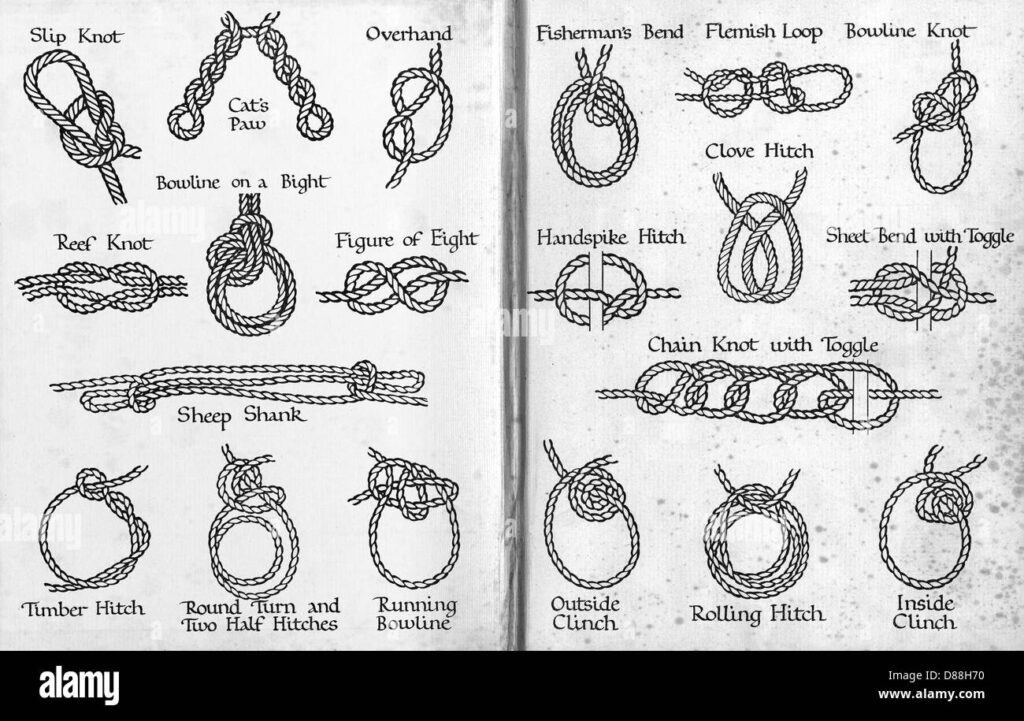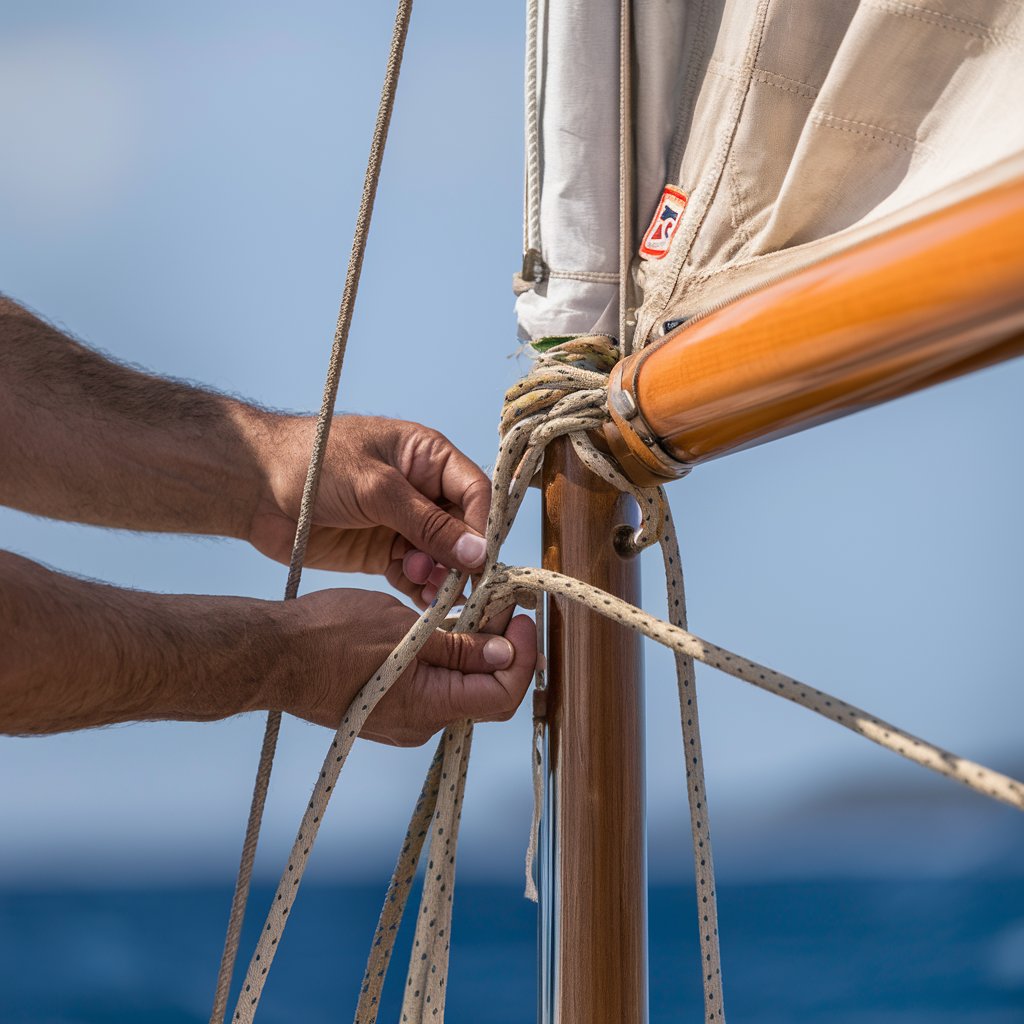Mastering the fundamentals of seamanship is the bedrock of successful sailing. Each aspect, from Wind Patterns to knot-tying, plays a crucial role in ensuring safe and efficient navigation. The journey of becoming a skilled sailor begins with understanding and respecting the elements that influence every voyage.
Let’s start with Wind Patterns. They are a sailor’s primary focus. Reading the wind isn’t just about feeling its direction, but also predicting its behavior. Gusts, lulls, and shifts can significantly impact the journey, so a keen eye is essential. Sailors must learn to distinguish different wind patterns and understand how to adjust their sails accordingly. This involves constant practice and observation, turning each moment on the water into a learning experience.
Water, with its currents and tides, is another critical element. The sea’s behavior is as crucial as the wind’s. Currents can either aid or challenge a sailor, and understanding them is vital for plotting a course. Tides, too, must be heeded, as they can drastically alter conditions. An expert sailor knows how to read the water, recognize changes, and anticipate the sea’s movements.
Beyond the elements, practical skills like knot-tying and sail trimming are essential. Different knots serve different purposes, whether securing lines or adjusting sails. Mastering these techniques ensures that everything on the boat is secure and functioning optimally. Sail trimming, on the other hand, is all about maximizing the boat’s performance. Adjusting the sails to catch the wind efficiently can make all the difference between a smooth journey and a struggle against the elements.


Navigating by the stars and understanding Weather patterns go hand-in-hand with the practical skills mentioned above. Star navigation is a traditional technique that still holds relevance, especially when modern instruments fail. Recognizing constellations and using them to guide your course was the bedrock of ancient seamanship, and it remains a valuable skill. Meanwhile, reading Weather Patterns helps anticipate Storms or shifts in conditions that could affect the voyage.
What is more, seamanship isn’t just about technical skills; it’s about mental resilience and calm. The sea is unpredictable, and Emergencies are inevitable. Maintaining composure and knowing how to respond under pressure can save lives. Practice emergency procedures regularly and stay prepared for the unexpected. This combination of practical skills and mental fortitude defines a seasoned sailor, always ready to tackle the challenges of the open water.
The Evolution and Community of Sailing
Sailing, while rooted in timeless principles, has evolved significantly with the advent of modern technology. Contemporary sailboats boast advanced navigation systems, autopilots, and Communication Tools that not only enhance safety but also improve efficiency. These technological advancements have redefined what’s possible on the open water, transforming sailing into a more accessible and highly efficient endeavor.

Materials like carbon fiber and Kevlar have revolutionized the design of sails and hulls. These innovations make boats lighter, faster, and more durable, allowing sailors to push the limits of speed and performance. While these modern elements are integral to today’s sailing, the essence of the craft remains in the sailor’s skill and intuition. Technology serves as a valuable aid, but it can’t replace the instinctual connection between a sailor and the sea.
Beyond technology, the culture and community of sailing play a pivotal role. Yacht clubs, Regattas, and Sailing schools foster camaraderie and a shared passion for the sport. These institutions are more than just social hubs; they are crucial for skill development, offering opportunities to learn from experienced sailors and participate in friendly competitions. This sense of community enriches the sailing experience, making it about more than just the solo pursuit of adventure.
Traditions and stories passed down through generations contribute to the rich Culture of Sailing. Whether it’s sharing tales of daring voyages, commemorating historical races, or simply exchanging tips and tricks, these narratives bind the sailing community together. They offer inspiration and knowledge, echoing the collective wisdom that has been built over centuries.

Experience unparalleled comfort with PlushBeds’ premium mattresses! Crafted from the finest organic materials, our mattresses offer luxurious support and eco-friendly peace of mind. Transform your sleep with PlushBeds and wake up refreshed every morning. Click HERE and Discover the perfect mattress for you at PlushBeds

What are the Basic Principles of Sailing?
Understanding the basic principles of sailing is essential for anyone stepping aboard a sailboat. At its core, sailing relies on the interaction between the wind and the sails. The primary concept is to harness the wind’s power to propel the boat forward. This is achieved through the use of sails, which are adjusted to catch the wind at different angles. The most fundamental maneuver is the ‘close-hauled’ position, where the sails are pulled tight to sail as directly into the wind as possible. By trimming the sails and adjusting the boat’s direction, sailors can effectively harness the wind’s power, even when it’s coming from an unfriendly direction.
Another critical principle is the understanding of the points of sail, which are the different angles to the wind that a boat can sail. These include upwind (beating), across the wind (reaching), and downwind (running). Each point of sail requires specific sail adjustments to optimize performance and ensure smooth navigation. Additionally, concepts such as ‘tacking’ and ‘jibing’ are fundamental maneuvers used to change direction relative to the wind. Tacking involves turning the bow of the boat through the wind, while jibing involves turning the stern through the wind.
Mastery of these maneuvers, along with a solid grasp of sail trim, boat balance, and the use of the keel or centerboard to prevent sideways drift, forms the foundation of proficient sailing. Understanding and applying these principles enables sailors to navigate efficiently and safely, making the most of the wind’s power to explore the open waters.
What are the 3 Rules of Sailing?
The three fundamental rules of sailing, often referred to as the “right of way” rules, are essential for maintaining safety and order on the water. The first rule is the “port-starboard rule,” which dictates that when two sailboats are on a collision course, the boat on the port tack (with the wind coming over the port side) must yield to the boat on the starboard tack (with the wind coming over the starboard side).
The second rule is the “windward-leeward rule,” which states that when two sailboats are on the same tack, the boat to windward (closer to the wind) must keep clear of the boat to leeward (further from the wind). The third rule is the “overtaking rule,” which requires any boat overtaking another from behind to keep clear until it is fully past the boat being overtaken. These rules are designed to prevent collisions and ensure smooth navigation, fostering a safe and enjoyable sailing experience for everyone on the water.
Q&A with Experienced Sailors: Expert Advice for Your Sailing Journey

Q: What are the essential skills every new sailor should master?
A: Mastering basic navigation, understanding weather patterns, and honing sail handling techniques are crucial for any new sailor. These skills will ensure you can safely and efficiently maneuver your vessel in various conditions. Additionally, learning how to tie essential knots, such as the bowline and cleat hitch, will be invaluable in everyday sailing tasks.
Q: How do you handle unexpected rough weather while at sea?
A: Preparation is key. Always check weather forecasts before setting sail, and have a plan in place for bad weather. Ensure your boat is well-maintained and equipped with necessary safety gear, such as life jackets, flares, and a reliable VHF radio. If you encounter rough weather, reduce sail area, secure loose items, and keep a steady course. Most importantly, stay calm and make decisions based on safety.
Q: What are some tips for maintaining a yacht?
A: Regular maintenance is crucial for keeping your yacht in top condition. Perform routine checks on the engine, rigging, and sails. Clean and inspect the hull for any signs of damage or wear. Keep the interior dry and well-ventilated to prevent mold and mildew. Establish a maintenance schedule and stick to it, and don’t hesitate to consult a professional for any major repairs or overhauls.
Q: How can I improve my sailing efficiency and speed?
A: To sail more efficiently, focus on sail trim and weight distribution. Properly trimmed sails will harness the wind more effectively, while balanced weight distribution can prevent unnecessary drag. Regularly clean the hull to reduce resistance and ensure your sails are in good condition without any tears or stretching. Additionally, understanding and using tidal currents and wind shifts to your advantage can significantly improve your speed.
Q: What should I pack for a long sailing trip?
A: Pack light but ensure you have all essentials. Bring enough food and water for the duration of your trip, plus a little extra in case of delays. Include a first-aid kit, personal medications, and necessary safety equipment. Pack clothing suitable for various weather conditions, including waterproof gear. Don’t forget navigational tools, such as charts and a compass, and ensure all your electronic devices are fully charged and have backup power sources.
Q: What are some safety tips for night sailing?
A: Night sailing requires heightened awareness and preparation. Ensure your navigation lights are working correctly and visible. Use a headlamp with a red light to preserve your night vision. Keep a proper lookout and maintain a safe speed to react to any obstacles or other vessels. Familiarize yourself with the night-time light signals of other boats and navigational aids. Always file a float plan with someone on shore and maintain regular check-ins.
Q: How can I stay connected while sailing offshore?
A: Staying connected offshore involves a combination of technology and planning. Invest in a reliable satellite phone or satellite internet service. VHF radios are essential for short-range communication, while SSB radios can cover longer distances. Apps and services like PredictWind provide weather updates and routing information. Make sure you have all necessary charging equipment and backup power sources to keep your devices operational.
Q: What advice do you have for provisioning a boat for a long voyage?
A: Plan your provisions carefully, considering the number of crew members and the duration of the trip. Choose non-perishable foods with a long shelf life and ensure you have a variety of items to prevent meal fatigue. Store fresh produce properly to extend its lifespan. Water is critical; carry enough for drinking, cooking, and cleaning, and consider having a water maker onboard. Regularly check and rotate your provisions to ensure nothing spoils.
Final Thoughts
Continuous learning and adaptation are fundamental to mastering the art of sailing. The sea’s unpredictable nature means that there is always something new to learn. Regular practice, staying updated on the latest advancements, and being open to new techniques are essential. Embracing this mindset ensures that sailors remain skilled and prepared for any challenge the water may present.
**Our Website contains affiliate links. This means if you click and make a purchase, we may receive a small commission. Don’t worry, there is no extra cost to you. It’s a simple way you can support our mission to bring you quality content**.

Discover your next adventure with TravelUp! Whether you’re seeking flights, hotels, or holiday packages, TravelUp offers unbeatable deals for every destination. Explore the world with ease, enjoy tailored travel options, and book with confidence. Click Ad below to Start your journey today at TravelUp!

